Volume 15, Issue 2+3
December
Displaying 1-6 of 6 articles from this issue
- |<
- <
- 1
- >
- >|
Original paper
-
2011Volume 15Issue 2+3 Pages J37-J44
Published: 2011
Released on J-STAGE: March 15, 2012
Download PDF (964K)
Others
-
2011Volume 15Issue 2+3 Pages J45-J47
Published: 2011
Released on J-STAGE: March 15, 2012
Download PDF (487K) -
2011Volume 15Issue 2+3 Pages J48
Published: 2011
Released on J-STAGE: March 15, 2012
Download PDF (163K) -
2011Volume 15Issue 2+3 Pages J49-J54
Published: 2011
Released on J-STAGE: March 15, 2012
Download PDF (287K)
-
2011Volume 15Issue 2+3 Pages 15C1-15C9
Published: 2011
Released on J-STAGE: March 15, 2012
Download PDF (367K) -
2011Volume 15Issue 2+3 Pages 15C10-15C13
Published: 2011
Released on J-STAGE: March 15, 2012
Download PDF (202K)
- |<
- <
- 1
- >
- >|
